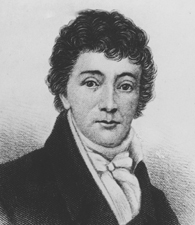Francis Scott Key was a Federalist, a lawyer, attorney general of Washington, D.C., a husband and the father of 11 children. An ancestor and namesake of author F. Scott Fitzgerald, Key is best known for a rare demonstration of poetry: “The Defence of Fort McHenry,” otherwise known as “The Star-Spangled Banner.”
Francis Scott Key’s Early Days
Francis Scott Key was born to a wealthy family in Frederick County, Maryland, on August 1, 1779. He was educated at a private school in Annapolis, Maryland, from a young age. Key had 11 children by his wife, Mary Taylor Lloyd, whom he met while studying at St. John’s College in Annapolis, Maryland. They settled in Georgetown when Key and his uncle, Philip Barton Key, founded a law practice.
Sources in this Story
- Biography.com: Francis Scott Key
- The New York Times: Francis Scott Key
- Encyclopedia Smithsonian: Star Spangled Banner and War of 1812
- Library of Congress: Handwritten Copy of Star-Spangled Banner
Writing the “The Star-Spangled Banner”
Key opposed the War of 1812 against Britain, but when his state was threatened, he joined a volunteer militia. During his service, he saw the White House, Capitol and other buildings burn.
He returned home in August 1814, just prior to the capture of his friend Dr. William Beanes by General Robert Ross and Admiral George Cockburn of the British army, the event that would spark “The Star-Spangled Banner.”
Key wanted to rescue his friend, and received a ship from President Madison to sail out to the British vessel holding Beanes. Key and Colonel John C. Skinner convinced Ross to release Beanes, but the Americans had to be detained because the British feared they would tell others about the impending attack on Baltimore.
From the ship, Key watched the September 13-14 bombing attack of Fort McHenry, which flew a large American flag. The morning after the battle, Key saw that the flag was still flying, signifying that the fort had withstood the bombardment. It inspired Key to write the poem “The Defence of Fort McHenry,” later known as “The Star-Spangled Banner.”
“The Defence of Fort McHenry” was revised several times during Key’s stay at the Indian Queen Hotel in Baltimore following the battle. He was encouraged to publish it by his wife’s brother-in-law.
Copies were printed and distributed to soldiers in and around Fort McHenry and Baltimore, along with instructions saying that it should be sung to the familiar tune of “To Anacreon in Heaven.” The first known performance of the song was at Baltimore’s Holliday Street Theatre on October 19, 1814.
“The Star-Spangled Banner” grew to become one of the most popular patriotic songs and was played often during the Civil War. In 1889, the Navy began playing it at flag-raising ceremonies, and in 1917, the Navy and Army adopted it as the national anthem for ceremonial purposes.
In 1931, Congress passed a law declaring “The Star-Spangled Banner” the national anthem of the United States. Officially, the song has four verses, though only the first verse is typically sung.
The Library of Congress offers an image of a rare copy of the song handwritten by Key himself.
The Maryland Historical Society Library has the earliest manuscript still in existence.
The Rest of the Story
Francis Scott Key went down in history for a single poem, but he was also an accomplished lawyer. From 1833 to 1841 he was district attorney of Washington, D.C., under Presidents Jackson and Van Buren.
Biography.com noted that Key had “a complex, some might say contradictory stance on race.” He oversaw proceedings that upheld slavery, but also described slavery as “a bed of torture.” He raised money for a proposed African colony for blacks, but was himself a slave owner. He died on January 11, 1843.
This article was originally written by Liz Colville; it was updated July 4, 2017.











